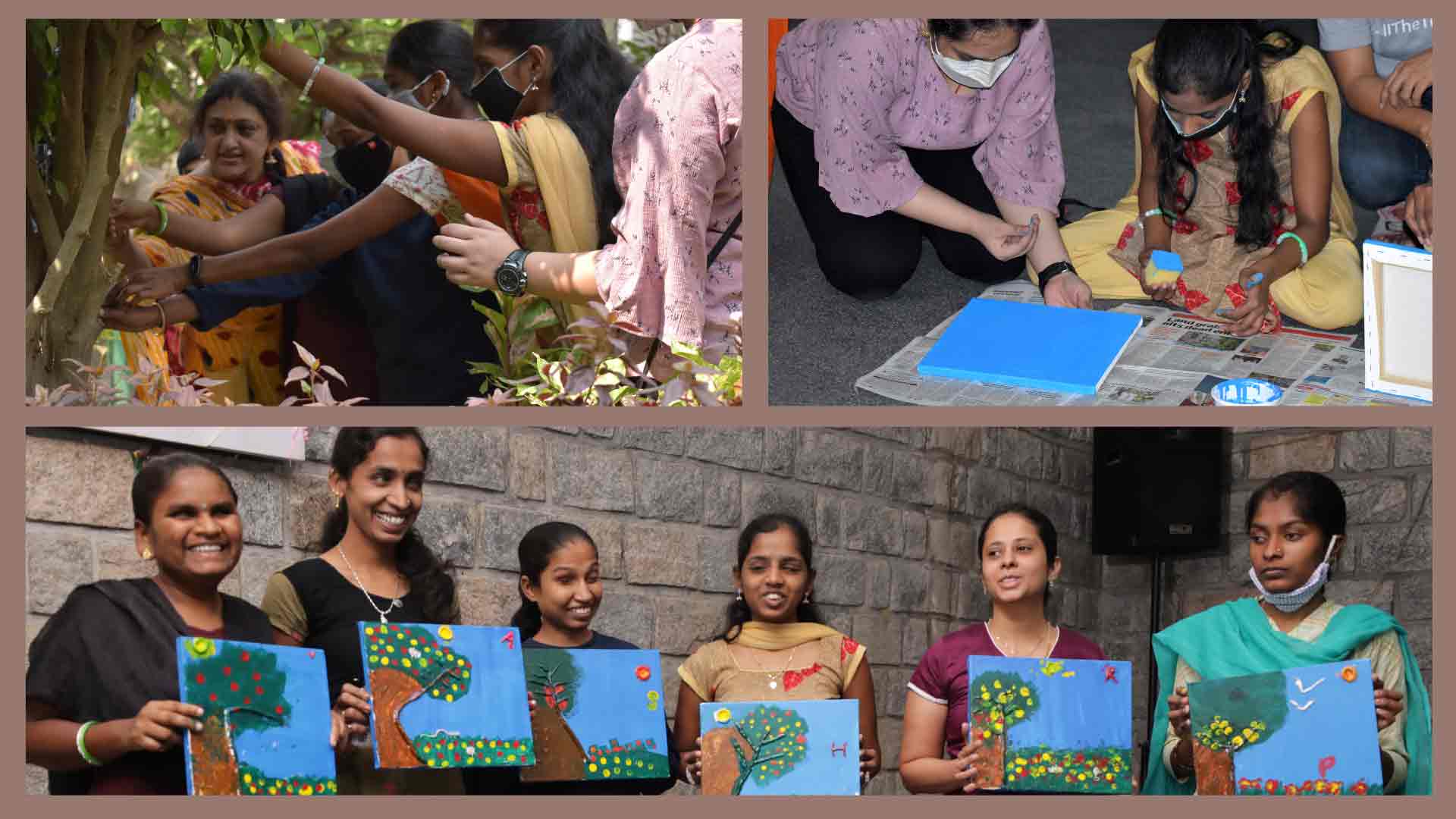Art in the Dark
14 April, 2021 | 7 min
Mrithigashree Sivasankar

How would you describe a colour only you have seen? Imagine a world seen in gray-scale, where you are the only one who can see colours (Kind of like Jonas in ‘The Giver’), how would you explain the perception of colours? It seems like an impossible question. The closest one can come to explaining a colour is to give analogies that associate a colour with a feeling, or a sensation. Like how Hellen Keller was introduced to blue – “They put my hands in their pool. They told me that the sensation I felt while swimming, that omnipresent coolness, that’s blue. Blue feels like relaxation.” It is still quite confusing, as we humans associate colours with different emotions, green is used to represent tranquillity, and envy. With all this in mind, doesn’t it seem incomprehensible, the idea of blind people, painting? Let’s find out.
I was a part of the “Art in the dark” event conducted by WinVinaya Foundation with Mitra Jyothi. As the name suggests, it was about introducing visual arts to people who were visually impaired. Now, how does a blind person “see”? Well, primarily via all the other senses. Mapping images however they perceive it to be, in their head. A combination of texture, smell, feeling, height, weight, and a couple of assumptions, they can usually make out things for what they are. And so, we took 6 willing participants from Mitra Jyothi, out into the garden, and assisted them in feeling the things around. The prickly grass, the tiny flowers that grew amidst, the scratchy barks of tree trunks and their cylindrical branches, the warmth of the golden sunlight on their hands, and everything in between.
After this tiny sensory adventure, all the participants were given canvases, which they immediately explored. They promptly figured out that the canvas was in-fact rectangular in shape, which I, as a sighted person took a while to realize. Using a sponge, they gave the canvas a base coat of acrylic blue, depicting the sky. They were then given Power tact, which is a clay like substance, and they were tasked to fashion it into the outlines of the tree they had just felt in the garden, and a sun on top. They went a step ahead, and decided to add a couple branches to the tree. Next, they were given Texture White, which is a paint like substance that looks kind of like vanilla ice-cream (it’s quite inedible, however tempting it looks), and were told to recreate the textures they felt on the bark onto the canvas. They added the paint, scratched it a little here and there, added a couple of dots and some swirls, and left it to dry. The embossed texture was quite impressive.
After letting it dry for a while (using a blow-dryer to speed up the consuming task), we proceeded to give them brown acrylic for the trunk of the tree, some yellow for the sun (one of the participants requested orange, it was beautiful), and some green for the leaves and grass. They used a combination of brush strokes, finger-painting and some sponge magic to give each colour some variety. After this, it was imagination time. Flowers were added to the grass, some mangoes and oranges to the trees, a couple of birds here and there, some fluttering butterflies, one person added a snake! Each painting, whilst being of the same exact garden, were quite distinctive. These additional elements they came up with, gave each piece a bit of a personality.
In the end, as the paintings were left to dry beside each other, one could not but marvel at the sight. Perhaps art does transcend disability, and we have merely been blind to its possibilities.
Head out to the link below to get a glimpse of the event and to know what the participants of the event had to say! https://tinyurl.com/wvf-ArtInTheDark
